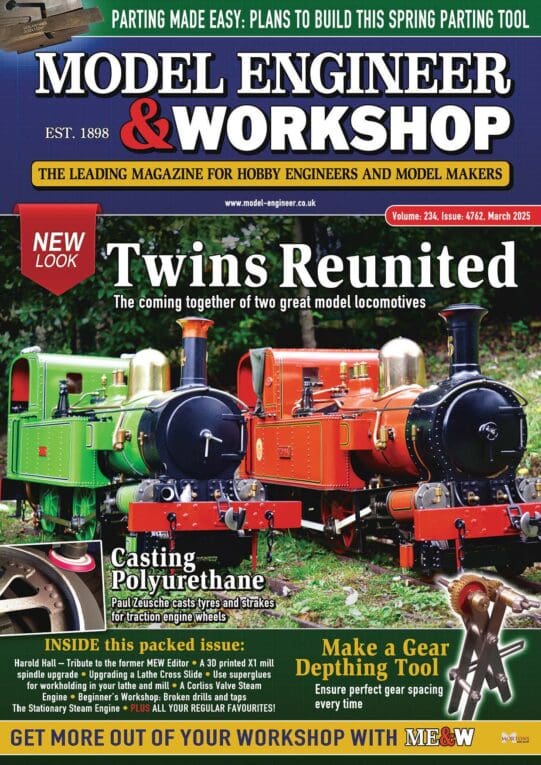I built my original one, which was smaller than the one above for an ML7 that I owned.
it was built before any of the cheap imports came into the country and the only ones available to me were the Dickson ones which where too expensive for me at the time.
I though long and hard over the design and based it on the above because internal dovetails are harder to do than external and you only make one post [ normally

]
My thinking was any detail work would only need to be done once.
The design was probably done around 1980 and I think it was published in ME in about ’85 or ’87.
The tool holders, of which you need more, can be done as mirror images of the toolpost using conventional dovetail cutters but I chose to make them in 24″ long strips on a horizontal miller using a 60 degree angled cutter which lasts far longer and can remove far more metal than a dovetail cutter. One side of the cutter is vertical, the other side is at 60 degrees and can put the profile for one side along the 24″ in one pass and the work is turned round and a second pass taken – job done.
All that needs doing is to saw off to length as required and finish as a tool holder, boring tool holder etc.
The posts and holders in the picture are larger to fit 6 -7″ centre hight machines but the design has just been scaled up.
I actually have three of these posts, all the same on three lathes and about 46 holders between the three lathes, only the hight stop on each post differs so all the holders can interchange.
I was going to make a far larger one for the big TOS lathe 11″ x 84″ but found a Dickson one with about 10 holders at a reasonable price. I’m pleased I went this way as I don’t like the Dickson one on the TOS.
Too may sticky up pieces for turning to get ravelled around and on heavy interrupted cuts they shake loose because of the cam arrangement not being positive.
However for what it gets used for it can stay until it gets retired next year
[edit] Also if you notice I do not have a top slide fitted, instead it’s been replaced by a large steel block, for me rigidity is worth more than the odd taper I need to do, the top slide is in the cupboard with it’s original 4 turret toolpost set up with three common tools for the three times a year I have to use it.
John S.
Edited By John Stevenson on 09/12/2010 00:09:06
Bill Pudney.




 ?
? ]
]



